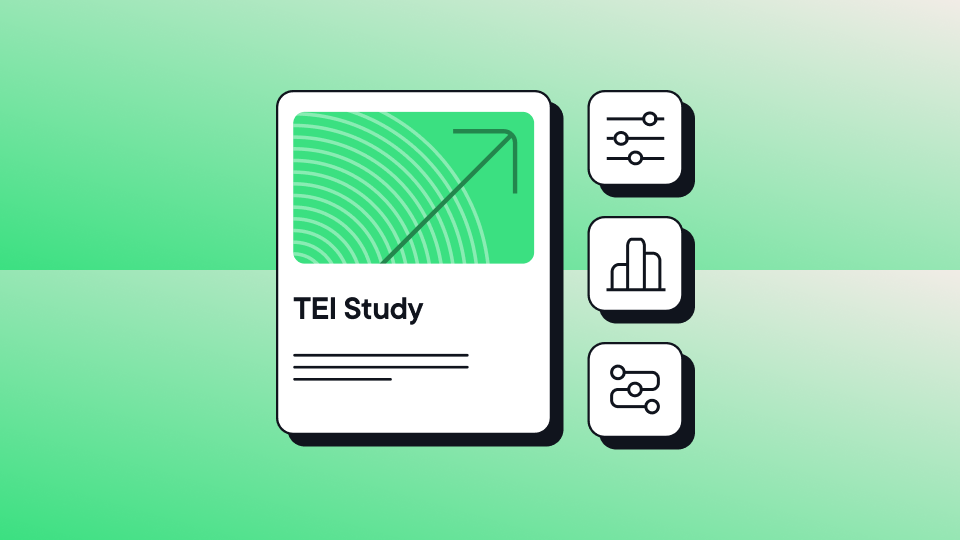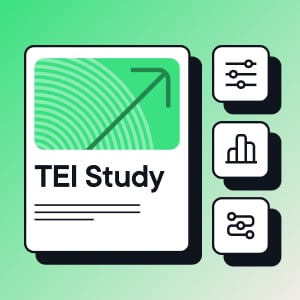This is not a drill; AI is really shaking things up in our world. It's totally reshaping how people find and consume information online. Terms like AEO (AI Engine Optimization) and GEO (Generative Engine Optimization) are no longer just buzzwords or marketing jargon, they are the key to digital success in this new era. So hold onto your hats as your websites visibility and traffic are in for a ride.
If you didn’t make it to our latest webinar on how to make your website visible to AI, or you need a refresher - we’ve got you covered.
Opti Overview
Optimizely's Content Management System is upgrading, all the new AEO/GEO features are coming your way soon!
Nazanin Ramezani, our VP of Product, CMS, and Michiel Dorjee, our Director of Digital Experience here at Optimizely, spilled the beans on their best tips and tricks that you can start using in your daily strategy right away. Plus, you'll get an exclusive sneak peek at how Optimizely's new CMS features are going to boost your visibility like never before.
Are you seeing what we are seeing? Traffic decline, but higher intent
The AI shift from platforms like Google's Search Generative Experience (SGE), Bing Copilot, and even direct answers from ChatGPT are providing users with immediate information, deterring users from clicking onto websites. Starting in the US and now more evident across the world as channels, especially Google, continue to roll out its AI functionality, the "zero-click" phenomenon has seen a 10-30% drop in website traffic, and some experiencing even more significant declines.
The numbers don’t lie; Google AI Overviews have more than doubled since March. Right now, about one in every six searches in the U.S. triggers an AI overview, and that's causing a 34% drop in clicks for those top search results. Your old playbook has got to go as your website has a new job.
Your website's role is evolving, and adapting your content strategy is paramount to staying visible and relevant. Let's explore the key insights from this discussion and how you can prepare your digital experience for the AI era.
Now for the interesting part, the silver lining if you will: even though overall traffic might be down, the visitors who do make it to your site are usually way more intentional. We have seen a 23% higher conversion rate from traffic that comes from AI sources. But how? Think of AI as a filter, sifting out all of the low-intent visitors or casual browsers. So when someone clicks through from an AI overview they’re typically seeking something specific or ready to take a complex action that a chatbot can’t handle. This means your website is no longer just about attracting visitors; it's a conversion machine for highly qualified, ready-to-engage users.
Your website has a new follower; people and bots
In this new landscape, your website now serves a dual purpose, catering to two distinct audiences: people and AI agents. Understanding this distinction is key to optimizing your digital strategy.
- Human users: we are not going anywhere! We will continue to visit websites, but our visits will be more intentional and purpose-driven due to, validation, brand experience and complex actions.
- Validation: Users might have found information via an AI chatbot, but they'll visit your website to validate its accuracy, ensure it's the most up-to-date source, or simply to experience your brand's unique tone of voice and expertise. Your website remains your branded digital real estate—the ultimate source of truth.
- Branded Experiences: Some things just feel better on a dedicated website, right? Think about how smooth Apple's checkout process is, or how you can endlessly scroll for fashion inspo on your favorite retail site. Or even specialized tools, like Optimizely's A/B test sample size calculator. The cool, interactive, and visually rich experiences just don't fit into a chatbot, and people will keep seeking them out.
- Complex Actions: While AI might book your dinner reservation, you're probably not going to apply for car insurance or manage your bank account through a chatbot. Any action that needs detailed info, secure transactions, or a nuanced understanding of your personal situation will stay right there on your website.
The second audience is AI agents, acting on behalf of humans. They see your website as a "content warehouse" or a "content source." They visit to find specific pieces of information to answer a user's prompt somewhere else. This means your website is no longer just a storefront; it's a structured library of data that AI can access, process, and cite. Optimizing for these AI agents is crucial, as they influence how your brand shows up in AI conversations. To cater to both audiences, a thorough content audit is key to figuring out which pages serve which purpose best, and then enhance those experiences to make you stand out.
Level up your content strategy for the age of AI
With this dual audience in mind, your content strategy needs a significant upgrade. The focus on churning out tons of content needs to switch to creating high-quality, strategically optimized content that works for both people and machines.
Firstly, please, please, please resist the urge to produce "AI slop"— You know, that low-quality, mass-produced stuff. While AI can definitely assist, a humans perspective, creativity, and expertise are more valuable than ever. Think of AI as an enhancer, not a replacement. Use it for ideation, research, summaries, or digging up relevant internal links. This way, your content will be well-sourced, authoritative, and truly stand out from the rest.
Secondly, embrace repurposing content in multiple formats. A single, well-researched piece of content can be transformed into a blog post, a video, an interactive tool, or a quick social media snippet. Richer formats like videos, interactive elements, and downloadable guides, are increasing in popularity. We even saw that by removing the forms to our gated assets, the consumption doubled! Not to say it wasn’t a little scary to ditch a source of lead-gen, but guess what? The increased engagement led to 30% more people filling out our "contact us" form. Proving that giving value freely can actually bring in better leads.
Finally, prioritize credibility. You’ve probably been using E-A-T (Expertise, Authoritativeness, Trustworthiness). This mean having clear metadata (who wrote it, when it was published/updated), and making sure your content is cited and mentioned on other reputable sites (like Reddit or industry-specific platforms). This external validation tells AI agents that your content is trustworthy and relevant, making it more likely to pop up in AI overviews.
How to master Generative Engine Optimization (GEO)
The conversation around the demise of SEO is just hear say. In reality, SEO is more important than ever—it's just levelled up. For AI agents to even find your content, traditional SEO principles still apply. As we mentioned in our webinar, when you ask ChatGPT a question, it does a web search (using Bing, for example). So, your content still needs to rank well for AI to discover it.
The next step is Generative Engine Optimization (GEO), which focuses on making your content machine-readable.
Here’s how you do it:
- Structure, structure, structure: use proper HTML tags (H1, H2, paragraphs) to clearly define content hierarchy. Implement schema markups (e.g., product schema) to provide structured data that AI can easily process. You might want to consider creating an LLM.txt file, similar to robots.txt, to tell AI agents which pages to crawl (or not crawl).
- Markdown Summaries: for key pages, creating a concise markdown summary can help AI agents quickly grasp your content. This boosts your credibility with these systems.
- Natural Language: use conversational language with a Q&A, or documentation-style tone. Avoid "marketing fluff" or overly complex language. AI agents are looking for direct answers, so clear, straightforward language that directly addresses common questions will perform better.
- Credibility & Agility: Ensure your content has clear metadata (author, publication date, last updated date) to boost its E-A-T score. Outdated content, even if it once ranked well, can hurt your GEO efforts by signalling that it’s no longer relevant. So why not use AI to remind you to update your content?
But let’s not forget, we are all learning here. This is a rapidly evolving space, and "nobody really knows" all the answers yet. However, by implementing these structured content and natural language practices will undoubtedly improve your content's machine readability and increase its chances of being discovered and cited by AI agents.
Optimizely has redefined CMS for the era of AI powered search
The big question is how? We understand the challenges and opportunities that AI brings, that’s why we're actively building features within our Content Management System (CMS) and leveraging our AI platform, Opal, to make these changes easier for our customers. Our goal? To help you navigate the AI era without having to do all the heavy lifting yourself.
We're focusing on three main areas for AEO and GEO:
- Page-Level Optimization: Opal will automatically generate the critical metadata for your individual pages. This includes Q&A fields, relevant keywords, SEO/GEO specific fields, and E-A-T metadata (like author, creation, and last updated dates). We're also developing a markdown summary option for informational pages, allowing you to choose which content is best for quick AI consumption. This granular control ensures you can optimize specific pages for humans, AI or both.
- Site-Level Optimization: We're working on features like LLM.txt auto-generation, making it easier for AI agents to navigate across your entire website. Our GEO topic templates will give you structured content frameworks, making it easier to create AI-friendly pages without being a technical wizard. Additionally, bulk actions will let you update metadata across your entire site efficiently, keeping everything consistently optimized.
- Analytics & Insights: We know there's a bit of a black hole when it comes to AI analytics right now. So, we're teaming up with Cloudflare to give you actionable data. We'll show you which AI models are crawling your site, which pages they're hitting most, and your "crawl-to-refer" ratio. This data is going to be a crucial indicator, helping you see if your content optimization efforts are pushing you in the right direction and boosting your content's visibility to AI.
Let’s wrap up: Stay seen. Stay ahead.
The AI era is here, and it's reshaping the fundamental dynamics of how we experience digital content. While the dip in ‘traditional’ website traffic might seem daunting, it presents a unique opportunity to fine tune your content strategy to focus on higher-intent audiences and leverage AI as a powerful ally and not your enemy.
By embracing a dual-audience approach, creating high-quality content, and optimizing for SEO and GEO, your website will remain visible and continue to be a powerful asset to your brand.
- Sist oppdatert:09.09.2025 17:36:09


